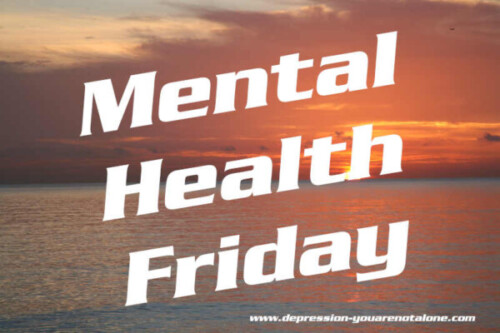Mental Health Friday 2023-02-17
On Mental Health Friday, we post, in alphabetical order, one per week, information on mental health disorders. Mental Health Friday is for informational purposes only, and is in no way meant to diagnose, treat or cure any disease. Please do not self diagnose and seek professional help for what ails you.
Hysteria
By Editorial Team AI
Introduction:
Hysteria is a psychological disorder characterized by a wide range of physical and emotional symptoms that often lack a clear medical explanation. Historically, hysteria has been linked to women and was once considered a women’s disease. However, today, hysteria is recognized as a gender-neutral disorder that can affect both men and women. In this report, we will provide an overview of hysteria, including its definitions, history, symptoms, diagnosis, and treatment.
Definition:
Hysteria is a mental health condition that is typically characterized by a combination of physical and psychological symptoms. The term “hysteria” is derived from the Greek word hystera, which means uterus, reflecting the historical belief that the condition was primarily a women’s disease related to the uterus. However, today, hysteria is understood to be a gender-neutral condition.
Symptoms:
The symptoms of hysteria can vary widely depending on the individual and the severity of the condition. Common physical symptoms can include pain, muscle weakness, tremors, paralysis, and seizures. Psychological symptoms can include anxiety, depression, mood swings, and personality changes. Other symptoms can include insomnia, fatigue, headaches, and digestive problems.
History:
Hysteria has a long and complex history. In ancient times, the condition was thought to be caused by a wandering uterus, and it was believed that the uterus would move throughout the body and cause various physical and psychological symptoms. In the 19th century, hysteria became a popular diagnosis among physicians, and many women were diagnosed with the condition based on their perceived emotional and physical symptoms. It was also during this time that the term “hysterical paralysis” was coined to describe cases of paralysis that had no clear medical explanation.
Diagnosis:
Diagnosing hysteria can be challenging as the symptoms can be similar to those of other medical conditions. A comprehensive medical evaluation is usually the first step in diagnosing hysteria. The evaluation may include a physical exam, blood tests, and imaging tests. The doctor may also refer the patient to a mental health professional for a psychological evaluation.
Treatment:
Treatment for hysteria typically involves a combination of medication and therapy. Medications may be used to manage symptoms such as anxiety and depression. Therapy can help patients identify and manage the underlying emotional and psychological issues that may be contributing to their symptoms. Cognitive-behavioral therapy (CBT) and psychotherapy are common approaches to treating hysteria.
Effects:
Hysteria can have a significant impact on a person’s quality of life. The physical and psychological symptoms can make it difficult for individuals to function in their daily lives. The condition can also be challenging for family members and caregivers to manage, as the symptoms can be unpredictable and challenging to treat. However, with proper treatment, many people with hysteria can manage their symptoms and lead fulfilling lives.
Conclusion:
Hysteria is a complex mental health condition that can have a significant impact on a person’s quality of life. While historically linked to women, hysteria is now recognized as a gender-neutral disorder that can affect both men and women. Treatment for hysteria typically involves a combination of medication and therapy, and many people can manage their symptoms with proper care. As with all mental health conditions, it is essential to seek help from a qualified healthcare professional if you are experiencing symptoms of hysteria or any other mental health condition.

